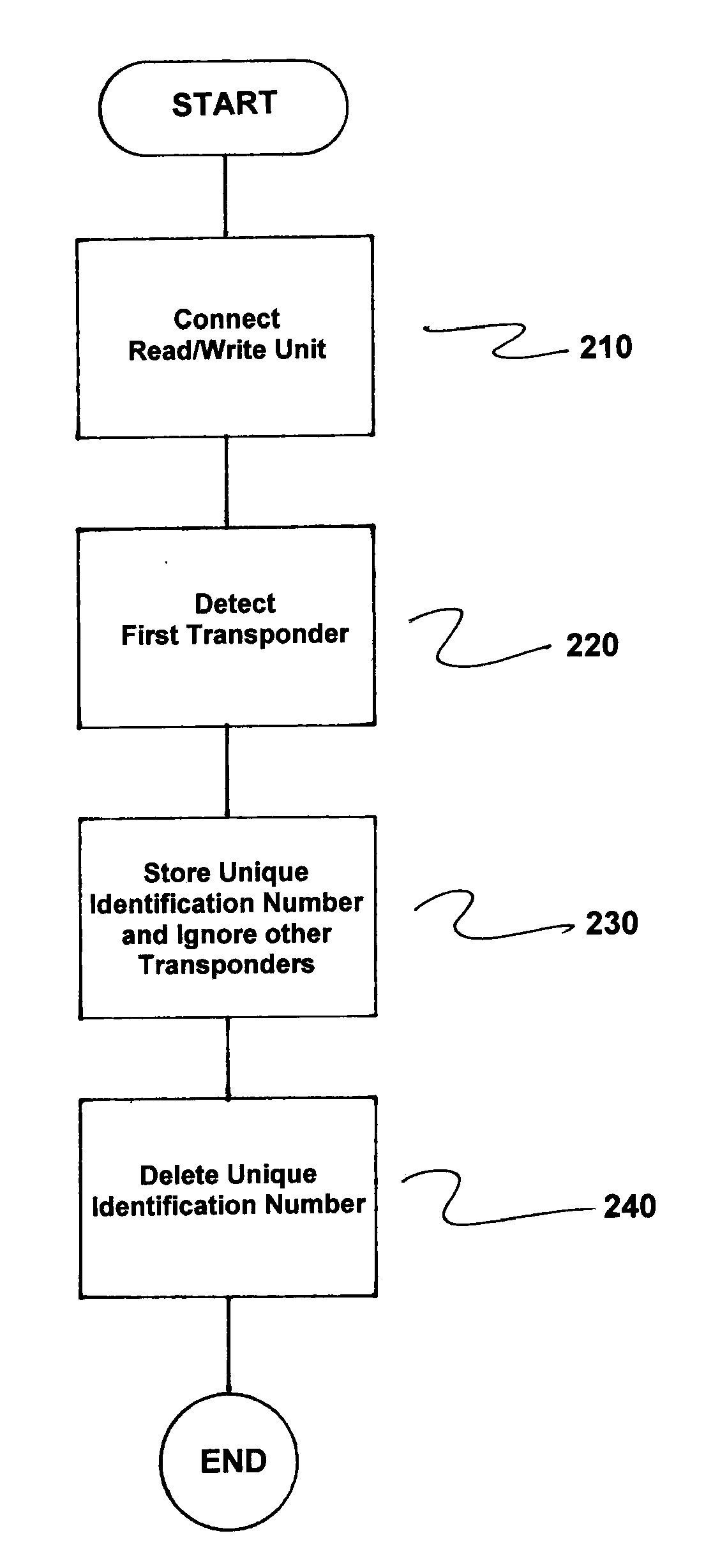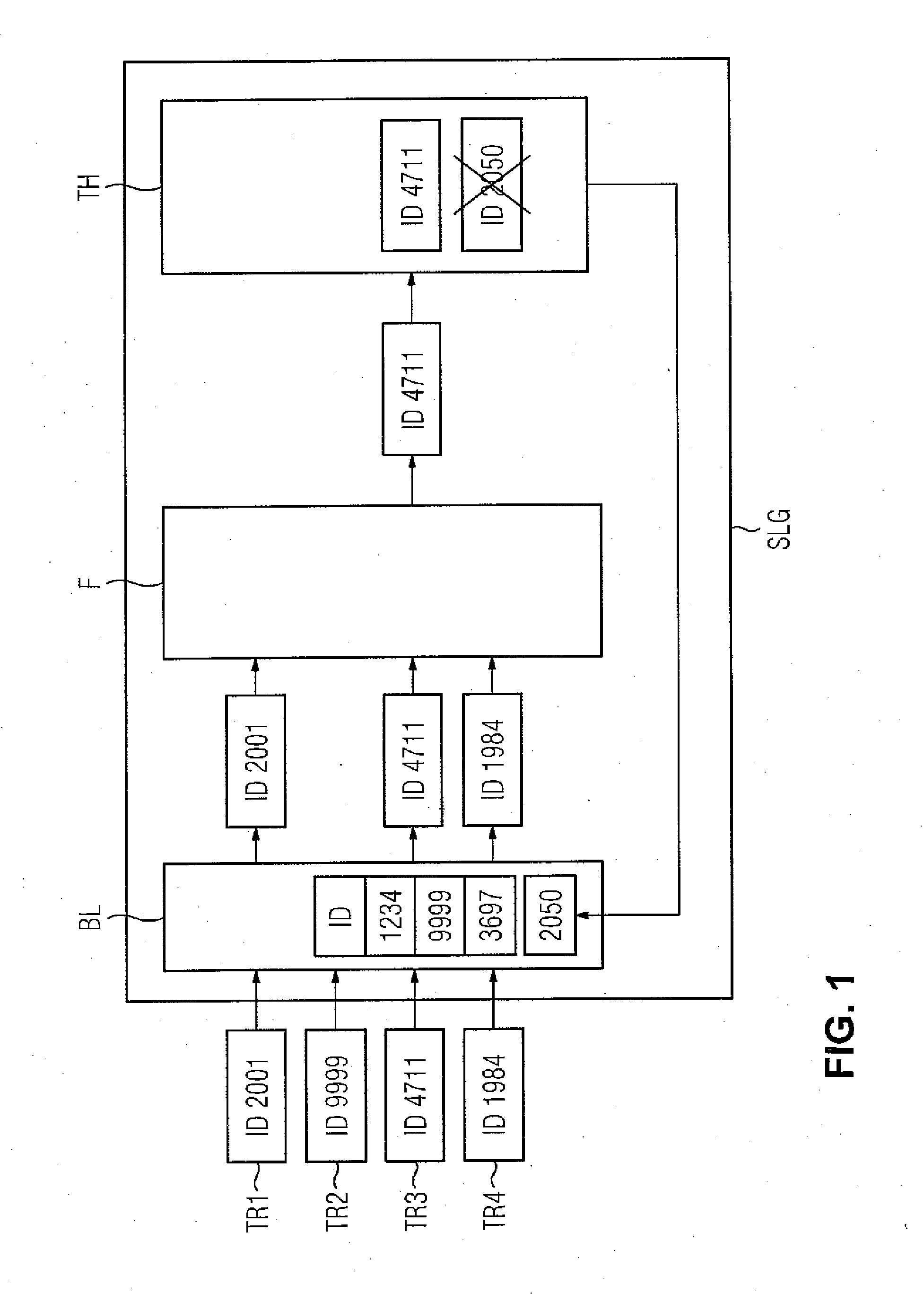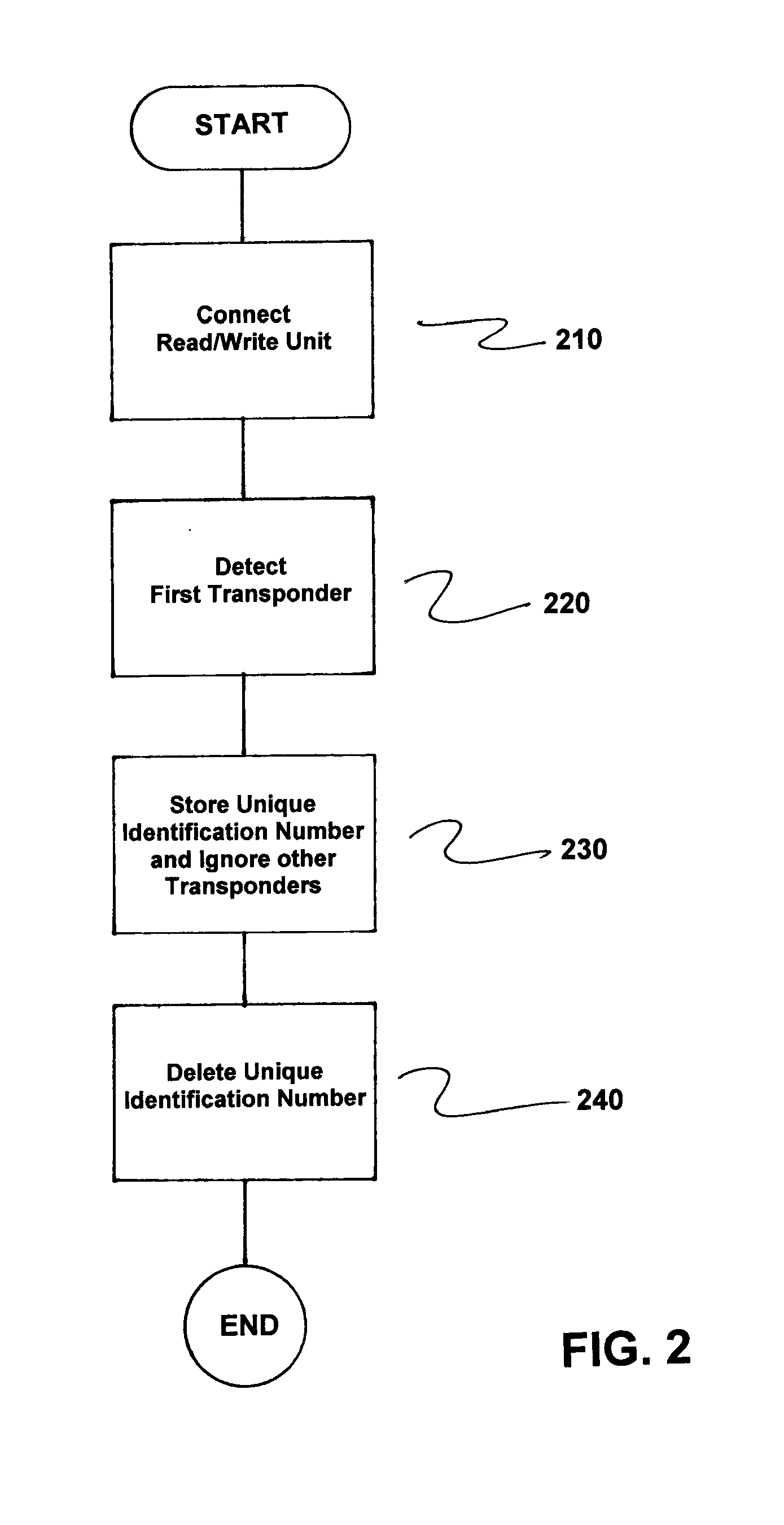Method of Implementing and Operating and a Read/Write Unit for a System with Multiple Contactlessly Readable Transponders
a technology of contactless readable transponders and read/write units, which is applied in the field of implementing and operating and implementing read/write units for systems with multiple contactless readable transponders, and can solve problems such as inability to reliably detect and recognize the desired transponder, and errors in downstream processes
- Summary
- Abstract
- Description
- Claims
- Application Information
AI Technical Summary
Benefits of technology
Problems solved by technology
Method used
Image
Examples
Embodiment Construction
[0020]FIG. 1 is a schematic block diagram illustrating the process of detection of identification numbers of transponders and the further processing thereof in a read / write unit in accordance with the invention. In the exemplary embodiment described with respect to FIG. 1, a system or arrangement (not fully illustrated) includes a read / write unit SLG, an industrial control device (not illustrated) and four transponders TR1, . . . , TR4. The transponders TR1, . . . , TR4 are located within the maximum transmitting / receiving range of the read / write unit SLG.
[0021]Initially, the read / write unit SLG is in a recognition phase, i.e., none of the transponders TR1, . . . , TR4 are registered in the holding register TH (“Tag Hold”). The read / write unit SLG then emits a carrier wave for detection, initially with a minimum transmitted power. This transmitted power is increased gradually until at least one of the transponders TR1, . . . , TR4 is activated. In the ideal case, the transponder tha...
PUM
 Login to View More
Login to View More Abstract
Description
Claims
Application Information
 Login to View More
Login to View More - R&D
- Intellectual Property
- Life Sciences
- Materials
- Tech Scout
- Unparalleled Data Quality
- Higher Quality Content
- 60% Fewer Hallucinations
Browse by: Latest US Patents, China's latest patents, Technical Efficacy Thesaurus, Application Domain, Technology Topic, Popular Technical Reports.
© 2025 PatSnap. All rights reserved.Legal|Privacy policy|Modern Slavery Act Transparency Statement|Sitemap|About US| Contact US: help@patsnap.com



